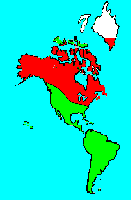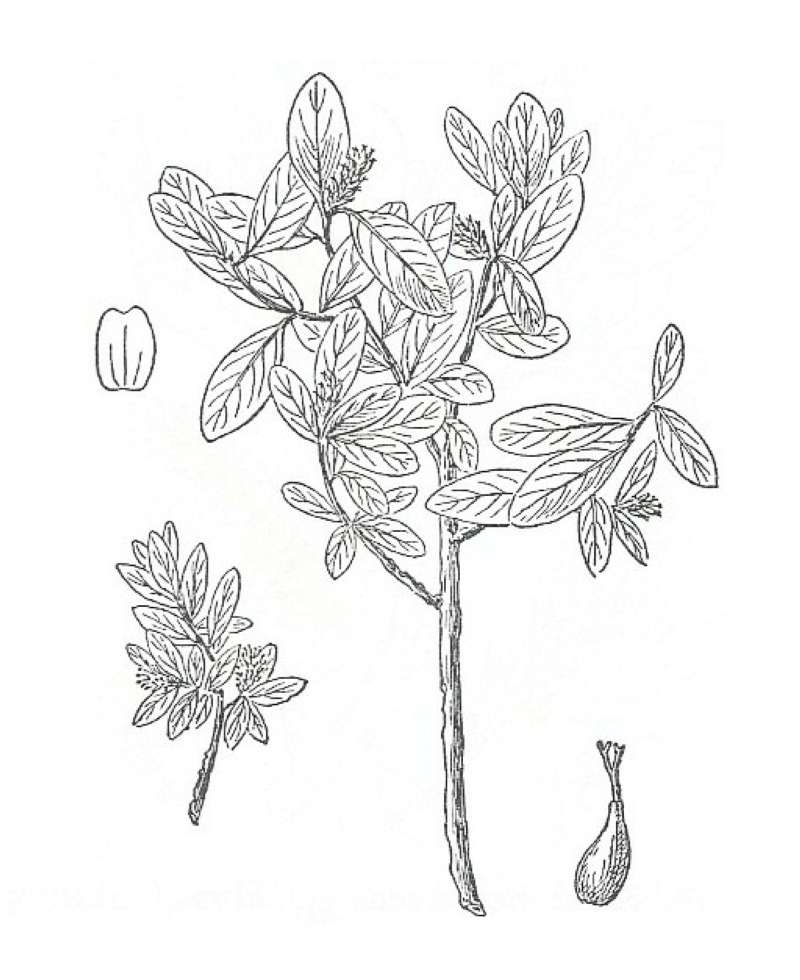SPECIES INFO
Green-Scaled willow (Salix chlorolepis) is a local lifeform found only in Quebec. This shrub is less than 3 feet high. The branches are smooth and almost erect. The leaves are less than one inch long and somewhat oval.Salix genus (Willows) is a worldwide genus of about 300 species of shrubs and trees that is most abundant in the northern and arctic areas of the world. This genus is found almost worldwide except for Australia. There are approximately 40 species native to the eastern United States and Canada, and over 60 species native to the western and extreme northern parts of the New World. Kartesz lists 100 species, 36 hybrids, and 42 subspecies as being found in his greater North America, which includes the United States, Canada, Hawaii, Greenland, Puerto Rico and the U.S. Virgin Islands.
Many species of willows prefer wet habitats. Consequently, they are typically found in swampy or wet areas. The group is very difficult to accurately identify to the species level, and in many instances, it is almost impossible. Most willows are fast-growing and their wood is of little commercial value. A few species, including the well-known weeping willow, are frequently planted as ornamentals.
The author spent a summer attempting to identify the willows found in the Chain of Lakes area in northern Illinois. The fist conclusion is that this is a difficult group. The species found in the sandy area near Lake Michigan are unlike the species found on shores of lakes in the chain, and unlike the species found in swamps.
Britton and Brown divided the willows (Salix genus)in their key by separating the Arctic low growing species from the trees and shrubs found further south. By creating a new family for these Arctic species, we are not suggesting they belong as such, but when they are removed and treated separately, a person attempting to identify a willow will find this conquer and divide system should be of great help.
Willow and Poplar Order (Salicales) has only one family. These are mostly woody trees and shrubs, but a few arctic species have a woody base, but shoots are produced annually. The leaves usually have petioles. Tiny flowers appear in catkins. Many species grow quite rapidly.
Dicots (Dicotyledoneae Class) are the predominant group of vascular plants on earth. With the exception of the grasses (Monocots) and the Conifers (Gymnosperms), most of the larger plants that one encounters are Dicots. Dicots are characterized by having a seed with two outer shell coverings.
Some of the more primitive Dicots are the typical hardwood trees (oaks, birches, hickories, etc). The more advanced Dicots include many of the Composite (Aster) Family flowers like the Dandelion, Aster, Thistles, and Sunflowers. Although many Monocots reach a very high degree of specialization, most botanists feel that the Dicots represent the most advanced group of plants.
Seed plants (Phylum Embryophyta) are generally grouped into one large phylum containing three major classes: the Gymnosperms, the Monocots, and the Dicots. (Some scientists separate the Gymnosperms into a separate phylum and refer to the remaining plants as flowering plants or Angiospermae.)
For North American counts of the number of species in each genus and family, the primary reference has been John T. Kartesz, author of A Synonymized Checklist of the Vascular Flora of the United States, Canada, and Greenland (1994). The geographical scope of his lists include, as part of greater North America, Hawaii, Alaska, Greenland, Puerto Rico, and the Virgin Islands.
Kartesz lists 21,757 species of vascular plants comprising the ferns, gymnosperms and flowering plants as being found in greater North America (including Alaska, Hawaii, Greenland, Puerto Rico and the Virgin Islands.
There are estimates within the scientific world that about half of the listed North American seed plants were originally native with the balance being comprised of Eurasian and tropical plants that have become established.
Plant kingdom contains a large variety of different organisms including mosses, ferns, and seed plants. Most plants manufacture their energy from sunlight and water. Identification of many species is difficult in that most individual plants have characteristics that have variables based on soil moisture, soil chemistry, and sunlight.
Because of the difficulty in learning and identifying different plant groups, specialists have emerged that study only a limited group of plants. These specialists revise the taxonomy and give us detailed descriptions and ranges of the various species. Their results are published in technical journals and written with highly specialized words that apply to a specific group.
On the other hand, there are the nature publishers. These people and companies undertake the challenging task of trying to provide easy to use pictures and descriptions to identify those species.


